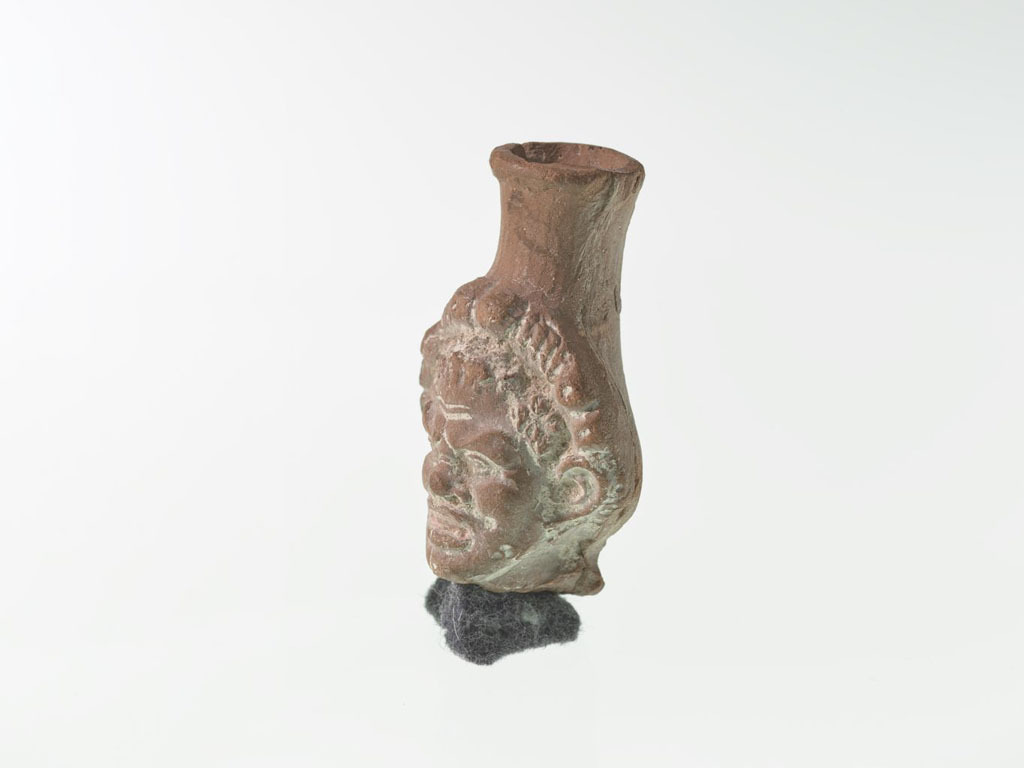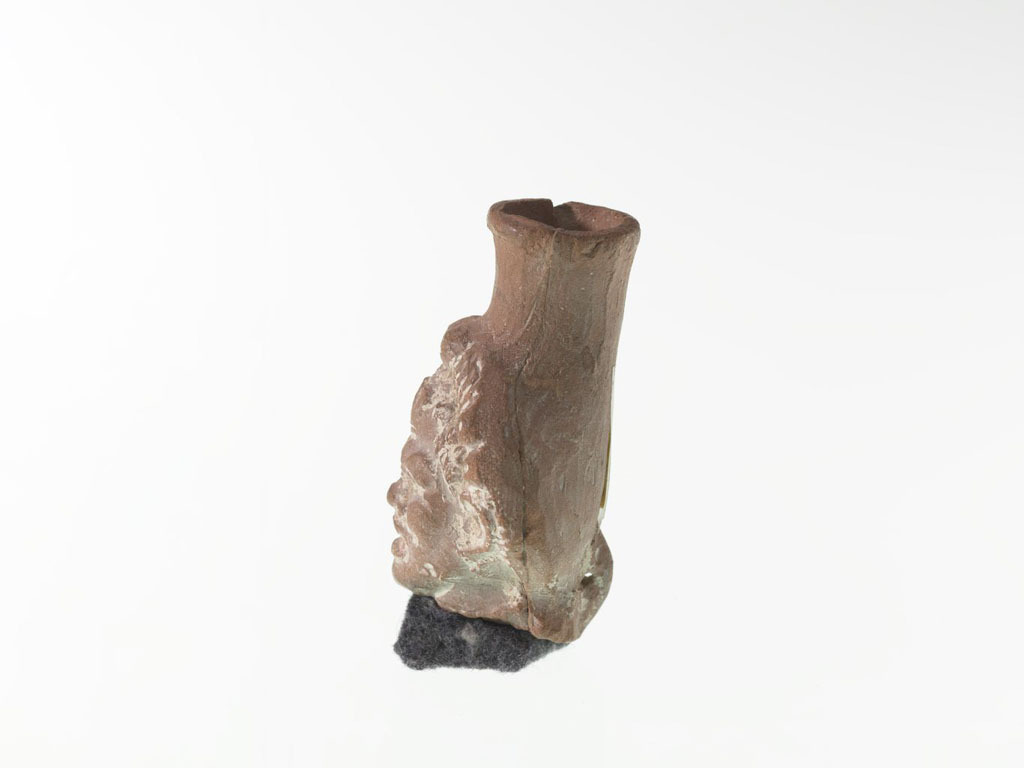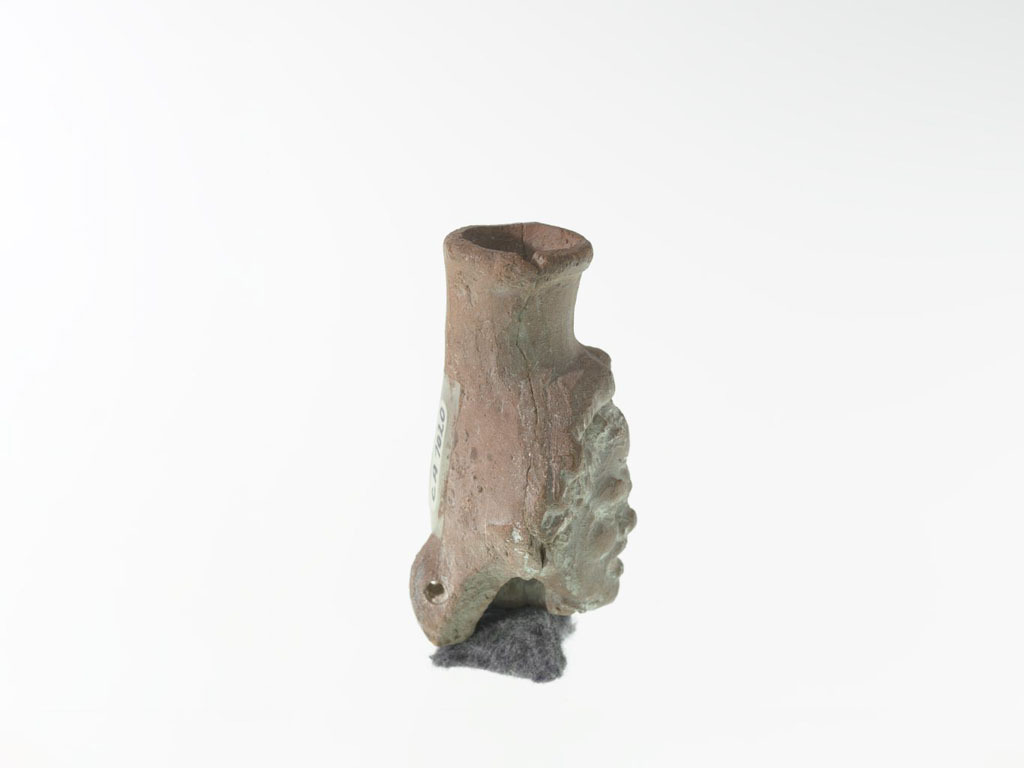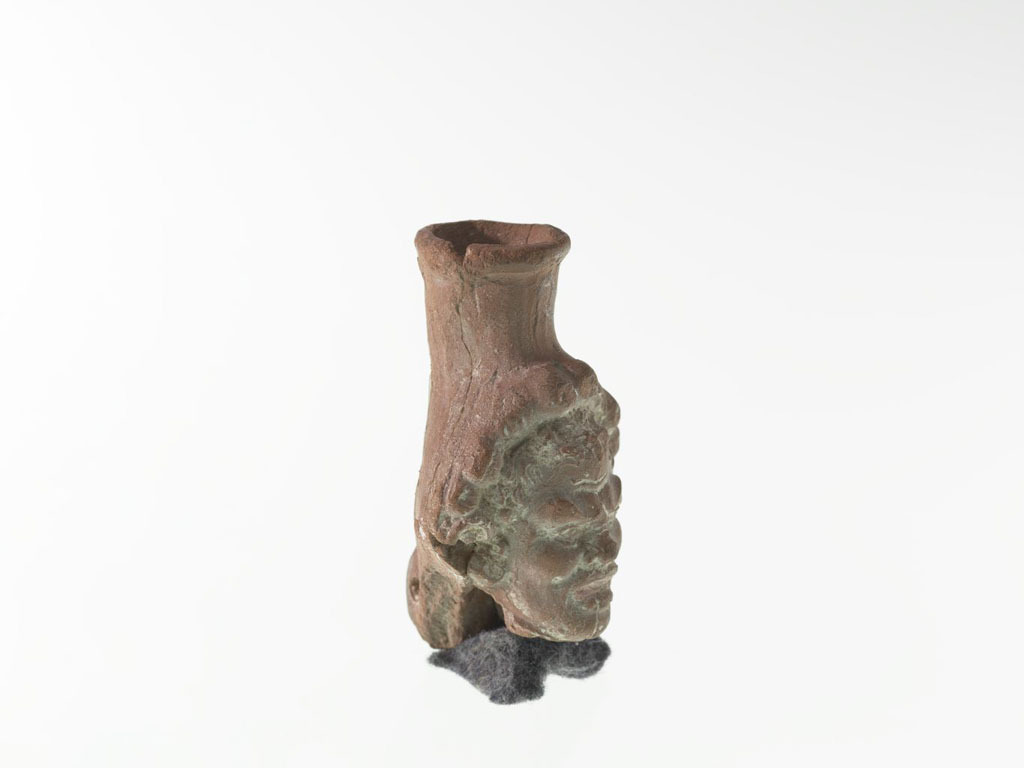This object is a fragment of a vase shaped like a head. It was probably once part of a balsamarium, a vessel meant to contain scented oil. There is an attached spout at the top of the head, but the vessel is broken at the neck. The entire vessel was covered with a white coating, as evidenced in the white that still remains in crevices of the face and hair. Unlike other anthropomorphic vases in the Menil Collection, there are no handles preserved.
The face represents a Black African male with exaggerated features. These include the highly raised eyebrows, furrowed nose, large ears, and oversized smiling mouth. There are added relief lines in the brow, possibly to indicate age, and round cheeks that accentuate the open mouth. The figure has curly hair and may wear a wreath. In the past, figures with such exaggerated features have been classified as “grotesques.” Objects previously classified in this way are not a unified group and the term itself is problematic.













